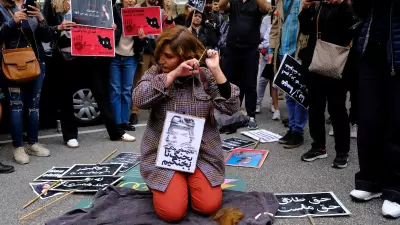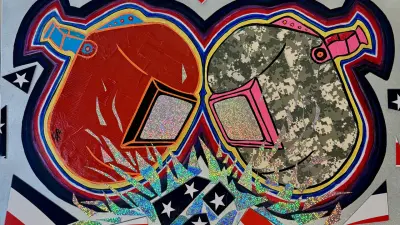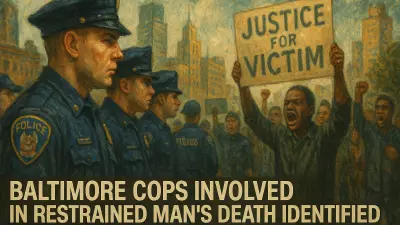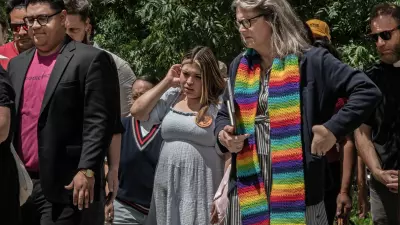Since the beginning of nationwide protests in September, thousands of Iranians, especially women, have voiced their discontent with the country’s hardline theocracy in ways not seen since the nation’s clerics came to power in 1979. The author, whose identity Postindustrial is withholding due to security concerns, notes, however, that some protesters face arrest, torture, and death while standing up for their convictions.

Recently an image depicting an Iranian woman dressed like a character in a “Handmaid’s Tale” while holding a “Woman, Life, Freedom” sign, circulated on social media.
It’s been more than 100 days since Iran’s anti-government, nationwide protests broke out following the death of Mahsa Amini — the 22-year-old Iranian woman who died in the custody of morality police for not wearing her hijab appropriately, becoming a symbol for the female-led uprising in Iran.
The protests began with women burning headscarves at Mahsa Amini’s funeral and has evolved into a civil-disobedience movement in the streets of Tehran and across Iran.
In the wake of the demonstrations, some women no longer wear hijabs, bravely defying the country’s hardline religious doctrine.
Protestors have become more aggressive; videos posted on TikTok appear to show some knocking off turbans of clergymen.
The defiance comes at a cost. In the last three months, an estimated 18,000 people have been arrested. Nearly 450 have died in the protests, reports the BBC.
Though many women are defying strict rules regarding headscarves, and Iran’s morality police have not been seen in the streets lately, the tyranny of the ruling clerics is not over. And despite some reports that Iran was disbanding its morality police, the Iranian government has not confirmed it.
As a Tehran-based journalist who has witnessed the uprising, I’ve been corresponding with Western media about what has been happening since the protests began. In a conversation with an American journalist who asked about the accuracy of the claim, I noted that our problem is not whether the morality police will be abolished. Rather, our ongoing dilemma in Iran is “religious fascism and medieval theocracy.”
However, there is hope.
During the last month was the Persian Solstice Festival of Yalda, which is celebrated and respected among Iranians and Farsi speakers throughout the world. This year, Iranians inside and out of the country lit candles on the longest night of winter in memory of all those who were killed during the protests.
There was also a campaign on social media platforms to ask people not to celebrate Yalda — an ancient winter solstice celebration — this year, in solidarity with the families of prisoners and those who were killed during the protests.
Yet we are hopeful and Yalda is symbolic: It conveys the idea that no matter how long the night and darkness is, light and morning will eventually come.
Tahereh K is an Iranian journalist based in Tehran.







